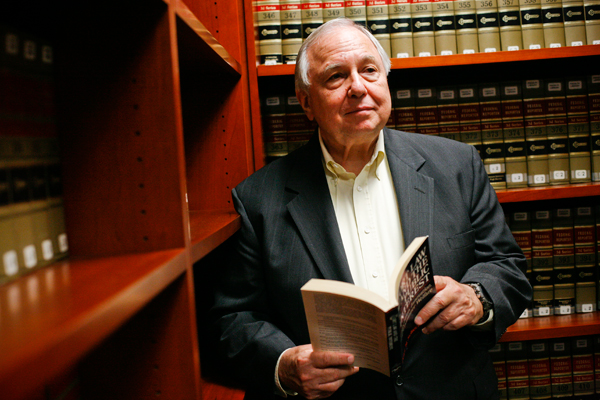Guest essay: SS bathrooms not that hard to do
By Prof. John Banzhaf
As more states pass laws requiring transgender students to use school restrooms based upon their anatomy, Virginia Governor Glenn Youngkin has proposed a simple solution to their needs: gender-neutral bathrooms, something I helped establish at George Washington University, where I am a public interest law professor.

Asked on CNN by a M2F [male to female] transgender student, “Do you really think that the girls in my high school would feel comfortable sharing a restroom with me?” — to which the obvious answer is a resounding "no" — Youngkin replied that “We need gender-neutral bathrooms and so people can use the bathroom that they, in fact, are comfortable with.”
Although the student didn't explain it, girls are likely to feel very uncomfortable for at least two separate reasons. One is the invasion of their sexual privacy by any student with a penis in their restroom, regardless of stated sexual identity or preference.
The other is that a girl who finds herself alone and half undressed in an isolated restroom with an anatomical male, even one in female clothing, may reasonably fear some kind of sexual assault or even rape; especially since several such crimes have already been known to occur.
So simply adding one or two individual-user ("single-seater" [SS] like airplane lavatories) gender-neutral restrooms to schools which do not already have them should not be difficult or expensive, although such rooms would require the installation of pipes to bring in water and then remove waste.
Since, according to the CDC, fewer than 1.5% of students 13-17 identify as transgender, having enough SS restrooms in a typical school — for no more than 15 students even in a large school of 1,000 — should not be difficult or unreasonably expensive.
Some LGBTQ advocates argue that transgender students should not be restricted to only one or two SS restrooms, but rather should have access to the same number as any typical boy or girl at the school would have.
But this argument doesn't recognize that eliminating discrimination does not always require completely equal access. For example, students who use wheelchairs cannot expect, much less require, that every entrance to a school or other building have a ramp installed so they can use it to enter.
Rather, the ADA and other statutes require only a "reasonable accommodation" or a "reasonable modification"; i.e., only ramps at a few entrances so that these few students are not unreasonably inconvenienced, and not a wheelchair-accessible ramp at every entrance.
If it is too difficult or expensive to add one or two SS lavatories to a school, another answer — which provides even more alternatives to transgender students — is to simply change the sign outside a typical multi-user men's rooms to read "All-Gender."
Just as you find on airlines, trains and long-distant buses.



